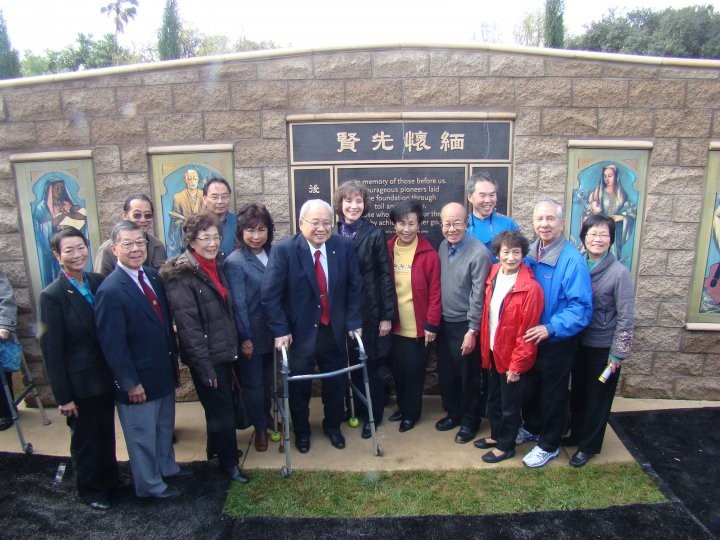Evergreen Cemetery
Chinese settlers immigrated to the United States from Southern China beginning in the 1840s. These men maintained their traditional religious and mortuary practices, and an essential aspect of their beliefs was a continuing association between the living and the dead. This philosophy of honoring the ancestors originated with the works of Confucius. One of his teachings was filial piety – a belief that consisted of obedience, respect and loyalty to one’s parents, and continuity of the family lineage.
When an individual died overseas, it was imperative to return their human remains to the ancestral village where the bond and devotion between the spirit of the ancestor and the living relatives could be maintained. To realize this objective Chinese in the United States practiced secondary burial. Two to ten years after an individual’s death hired bone collectors disinterred the bodies of the deceased and shipped them back to the home village in China.
The Los Angeles Historic Cemetery was opened in 1877 when the city established Evergreen Cemetery in East Los Angeles. Five acres of the cemetery land was set aside along Lorena and First Streets as a City Cemetery “for the sole purpose of burying bodies at public expense.” Indigents had to pay to be buried in the potter’s field. The amount was based on age and ethnicity. The Chinese paid the highest fee and the rate ranged between $10 and $15 per grave.
The first recorded burial took place in the indigent cemetery in 1880, and although records are sparse it appears that the Chinese were burying their dead there by 1885 and continued until 1923. A Chinese shrine, complete with burner for ritual funeral practices, was completed in 1888.
As the population in Los Angeles grew, the potter’s field became crowded. On June 19, 1923 the Superintendent of Charities for the County of Los Angeles wrote to the Chinese Chamber of Commerce and asked that the 902 Chinese people buried in the potter’s field at Evergreen Cemetery be transferred to the new Chinese cemetery on East First Street in Los Angeles. While the Chinese community were required pay to bury their residents, the Superintendent offered to pay the Chinese Chamber of Commerce $2 per body to be removed to the new cemetery “as fast as practicable.”
In 2005, while widening a street in East Los Angeles workers for the Metropolitan Transit Authority (MTA) accidently disinterred 118 graves at Evergreen Cemetery. Skeletal remains for Chinese, Hispanic and European American individuals, along with thousands of grave goods, were disturbed during the excavation. Archaeologists and construction personnel worked side by side to recover artifacts and skeletal remains. One hundred and eighteen graves were excavated, and these represented a minimum number of 132 individuals. Thirteen graves had two individuals in a single grave, and 53 graves lacked remains due to disinterment or disintegration. There were 3266 items recovered with coffin hardware being the most prevalent material.
Chinese artifacts also dominated the assemblage. These included ceramic tableware, stoneware food storage jars, opium smoking paraphernalia, tea or wine bowls, a Chinese lock, buttons, coins and burial bricks. Additional personal items recovered were gaming pieces, glass medicine vial, Chinese hair comb, hoop earrings, jade bracelets and a child’s bracelet with a charm inscribed in Chinese, “Precious, long life.” Fragments from eight Chinese headstones were found as well.
A committee was formed that included members of the Chinese Historical Society of Southern California to consider the future of the disturbed human remains and artifacts. This committee worked together for four years. Ultimately, Los Angeles Metropolitan Transportation Authority constructed a memorial wall to recognize the pioneers whose remains were disturbed by Metrorail construction. The memorial wall is adjacent to the historic Chinese shrine where the human remains and artifacts were reinterred. At a public ceremony on April 3, 2010, the memorial wall was unveiled, and participants at the event included two descendants of Charlie Yee Hay, a man buried at the site.


